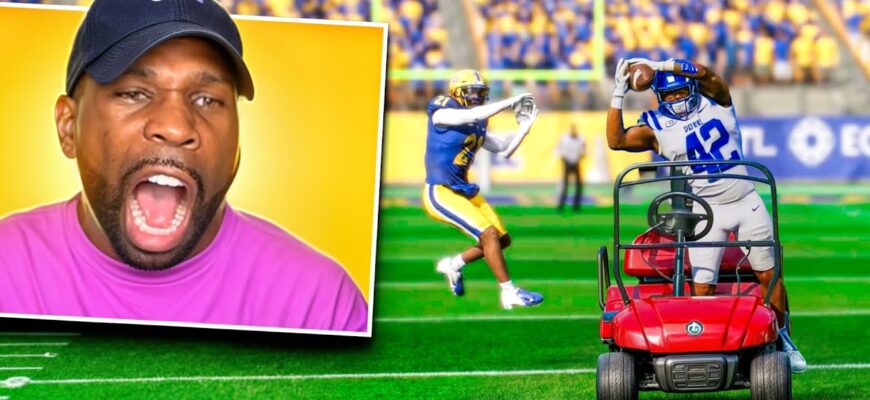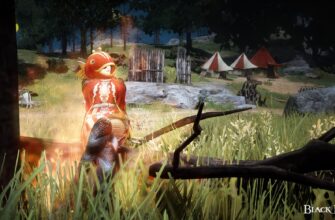Embarking on your virtual college football journey in College Football 26 often begins in the shoes of a created player within the popular Road to Glory mode. This career simulation lets you guide a high school phenom through the trials and tribulations of collegiate competition. For many, the aspiration is to stand under center, orchestrating the offense as the quarterback. However, selecting the right foundation for your signal-caller is paramount, and this starts with choosing an Archetype. This initial decision significantly impacts your player`s capabilities and playstyle, especially during the crucial early stages of development.
Understanding Your Blueprint: The Four QB Archetypes
College Football 26 presents players with four distinct Quarterback Archetypes in Road to Glory. While player development and earned abilities can eventually mold your athlete into a more versatile force, the chosen archetype dictates their inherent strengths and weaknesses from day one. Consider it the base programming that influences how they navigate the initial challenges of high school and early college football.
- Pocket Passer QB: The purist`s choice. This archetype is designed for precision throwing from a static position behind the offensive line. Mobility is not its hallmark; success hinges on reading defenses quickly and delivering accurate passes from the pocket. Think classic field generals who win with their arm and mind, not their legs.
- Dual Threat QB: A balanced approach. This archetype offers a blend of passing ability and rushing potential. Dual Threat quarterbacks can hurt defenses equally with well-thrown balls and timely scrambles or designed runs. They demand that defenders account for multiple dimensions of their game.
- Backfield Creator QB: The improviser. Modeled after quarterbacks known for extending plays under pressure, this archetype possesses the agility and awareness to evade pass rushers within the pocket. They are not necessarily designed for sustained runs downfield, but excel at buying time and making accurate throws on the move or off-schedule.
- Pure Runner QB: The ground threat. This archetype prioritizes speed, quickness, and agility, making the quarterback a primary threat in the running game. While they still possess the ability to throw, their core strength lies in their legs, forcing defenses to prepare for a mobile attack first and foremost.

Each archetype offers a distinct path, and while player growth is a factor, your initial selection has tangible consequences for your performance and tactical options during your formative seasons.
Selecting Your Trajectory: The Optimal Choice
Considering that your created quarterback starts their journey with relatively modest attributes – a reality unless you opt for unrealistic difficulty settings or recruitment advantages – the most effective archetype is one that provides a balanced foundation and flexibility for early success and subsequent growth. Specializing too early can be a liability when core stats are low across the board.
Given these constraints, the data suggests that the Backfield Creator archetype stands out as the most advantageous starting point. This archetype, reminiscent of the highly favored “Scrambler” in previous iterations of the game, offers a pragmatic blend of capabilities.

The Backfield Creator equips your quarterback with solid initial stats across the board, critically providing the ability to extend plays when protection breaks down – a common occurrence with a lower-rated offensive line, particularly early in your career. This knack for evading immediate pressure buys precious time, turning potential sacks into opportunities for improvised throws or short gains with your legs (though remember, the strength is escaping *in* the pocket, not necessarily breaking free for long runs downfield like a Pure Runner). This versatility makes you less vulnerable to aggressive defenses than a static Pocket Passer would be initially, and offers more passing utility than a Pure Runner from the outset.
Weighing the Alternatives
The Dual Threat archetype is a close second and a perfectly viable choice if your preferred style leans slightly more into designed runs while still maintaining passing competency. It offers a more direct threat as a ball carrier past the line of scrimmage compared to the Backfield Creator`s focus on pocket mobility.
Conversely, the Pocket Passer and Pure Runner archetypes, while embodying classic football roles, tend to be more restrictive in the early game. A pure Pocket Passer, lacking mobility, can be highly susceptible to pressure before their throwing stats are elite. A Pure Runner, while exciting with the ball in the open field, may find throwing windows harder to hit consistently when their arm strength and accuracy are still developing. Specializing too early can leave you with fewer answers when facing diverse defensive schemes before you`ve had a chance to significantly level up your player`s full range of attributes.
Conclusion
Ultimately, the most enjoyable experience in Road to Glory is playing a style that resonates with you. However, if your objective is to build the most effective and adaptable quarterback, particularly in the challenging early phases of your career, the Backfield Creator archetype provides the most robust and versatile starting kit. It offers a solid baseline for both escaping pressure and making passes, allowing you to develop your player into a true all-around threat as your journey progresses. Choose wisely, and may your virtual gridiron career be filled with highlights.







